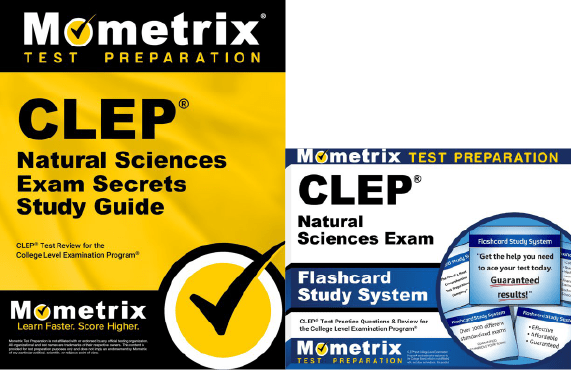If you need help studying for the CLEP® Natural Sciences exam or just want some more information about what the exam is like, you’ve come to the right place!
Click below to take a free CLEP Natural Sciences practice test!
What is a CLEP Test?
A CLEP exam helps you test out of certain intro courses in college. When you pass a CLEP exam, it proves that you know enough about that topic to move on to a more advanced course, which can save you a lot of time toward your degree!
Taking the CLEP Natural Sciences exam can allow you to bypass certain intro courses in biology and physical science.
What’s on the Exam?
First, let’s talk about the questions on the exam. There are 120 multiple-choice questions total, but some of the questions will NOT count toward your score. Why is that?
The unscored questions on the CLEP exam are there to determine if they’re good enough questions to add to future versions of the test.
The trick is that you won’t have any way of knowing which questions are scored and which ones aren’t—they will all appear like scored questions throughout the test.
The time limit for the test is 90 minutes (1.5 hours). There aren’t any scheduled breaks, but you’re free to take restroom breaks as needed!
Let’s take a closer look at the different sections of the Natural Sciences test:
Biological Science
50% of the exam
- Origin and evolution of life
- Classification of organisms
- Cell organization and cell division
- Chemical nature of the gene
- Bioenergetics and biosynthesis
- Structure, function, and development in organisms
- Patterns of heredity
- Concepts of population biology with emphasis on ecology
Physical Science
50% of the exam
- Atomic and nuclear structure and properties
- elementary particles
- Nuclear reactions
- Chemical elements
- Compounds and reactions
- Molecular structure and bonding
- Heat, thermodynamics, and states of matter
- Classical mechanics
- Relativity
- Electricity and magnetism, waves, light, and sound
- The universe (galaxies, stars, and the solar system)
- The Earth (atmosphere, hydrosphere, structure features, geologic processes, and history)
How to Register
To register for the test, you’ll need to create an account on the College Board’s website. From there, you can sign into the My CLEP student portal and register for the exam.
You’ll also have the option to send your final score to two institutions for free.
CLEP Scores
The CLEP Natural Sciences exam is scored using a scaled scoring method. Here’s how it works:
For every question you answer correctly, you get one point added to your raw score. At the end of the test, your final raw score will be converted to a scaled score. This scaled score will range somewhere between 20 and 80.
The reason your raw score is converted to a scaled score is because everyone that takes the test is given a slightly different set of questions. Since everyone has a different arrangement of questions, and because some questions are harder than others, converting your raw score to a scaled score ensures a more even playing field.
FAQs
What is CLEP?
CLEP stands for College-Level Examination Program®. This program was set up by the College Board to help students earn college credits without taking college courses.
Are CLEP exams hard?
It depends on which one you take! Some CLEP exams are harder than others due to the material being covered. For example, the Chemistry and Western Civilization II tests are considered to be the hardest, while the Spanish Language and College Composition tests are thought to be the easiest.
How many questions are on the CLEP Natural Sciences exam?
The exam contains 120 questions.
What is the time limit for the CLEP Natural Sciences exam?
The exam is timed at 90 minutes.
What is the passing score for the CLEP Natural Sciences exam?
It’s recommended that you get a final score of at least 50.
How much does the CLEP Natural Sciences exam cost?
The testing fee is $97.
CLEP® and College-Level Examination Program® are trademarks registered by the College Board, which is not affiliated with, and does not endorse, this page.



 CLEP Study Guide
CLEP Study Guide CLEP Flashcards
CLEP Flashcards